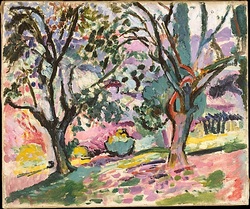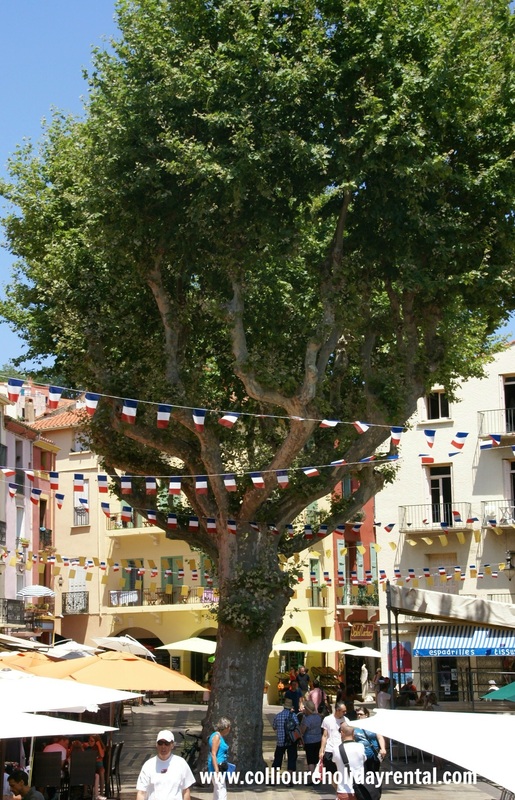
While wandering the streets of Collioure, you will see numerous types of trees and different kinds of flowing shrubs, fruit trees and vines. With the very mild temperatures in this area, there are always flowers of some kind and it is common to see orange trees blooming in January.
As you climb the hills of Collioure, you will come across olive groves. While fishing for anchovies was the main source of income for the Catalan families of the area, the growing of olives was also an important export. For many years, the region had more than 100 olive mills that produced olives for eating and also for producing oil. These groves were old and some even went back to ancient times. Unfortunately in 1956 there was an unseasonably cold winter and most of the region lost its olive trees. This was devastating to the local farmers and resulted in many replanting their fields with vines instead.
There are a few small pockets of olive groves still remaining that are now maintained by local cooperatives. They continue to plant and produce olives for oil production. There is a co-op located in Collioure that presses its olives using the windmill set up on the hill. In fact this is the oldest mill in the region dating back to 1337.
When the olive trees were still abundant in Collioure, they were the subject of many painters including Derain and Matisse. Matisse loved the colours in Collioure and often told his colleagues to come and spend time there, as it was “full of charming sites”. One of his earliest and most important paintings in the Fauvist time period was the “Promenade Among the Olive Trees”. It shows his love for colour and is known as the first piece of work that is definitively Fauvist in style.
As is typical, there is always some history in every corner of Collioure. Even while admiring the trees, there is a story worth telling. Spend some time looking up and around at the beautiful plant life in this area.
As you climb the hills of Collioure, you will come across olive groves. While fishing for anchovies was the main source of income for the Catalan families of the area, the growing of olives was also an important export. For many years, the region had more than 100 olive mills that produced olives for eating and also for producing oil. These groves were old and some even went back to ancient times. Unfortunately in 1956 there was an unseasonably cold winter and most of the region lost its olive trees. This was devastating to the local farmers and resulted in many replanting their fields with vines instead.
There are a few small pockets of olive groves still remaining that are now maintained by local cooperatives. They continue to plant and produce olives for oil production. There is a co-op located in Collioure that presses its olives using the windmill set up on the hill. In fact this is the oldest mill in the region dating back to 1337.
When the olive trees were still abundant in Collioure, they were the subject of many painters including Derain and Matisse. Matisse loved the colours in Collioure and often told his colleagues to come and spend time there, as it was “full of charming sites”. One of his earliest and most important paintings in the Fauvist time period was the “Promenade Among the Olive Trees”. It shows his love for colour and is known as the first piece of work that is definitively Fauvist in style.
As is typical, there is always some history in every corner of Collioure. Even while admiring the trees, there is a story worth telling. Spend some time looking up and around at the beautiful plant life in this area.

 RSS Feed
RSS Feed